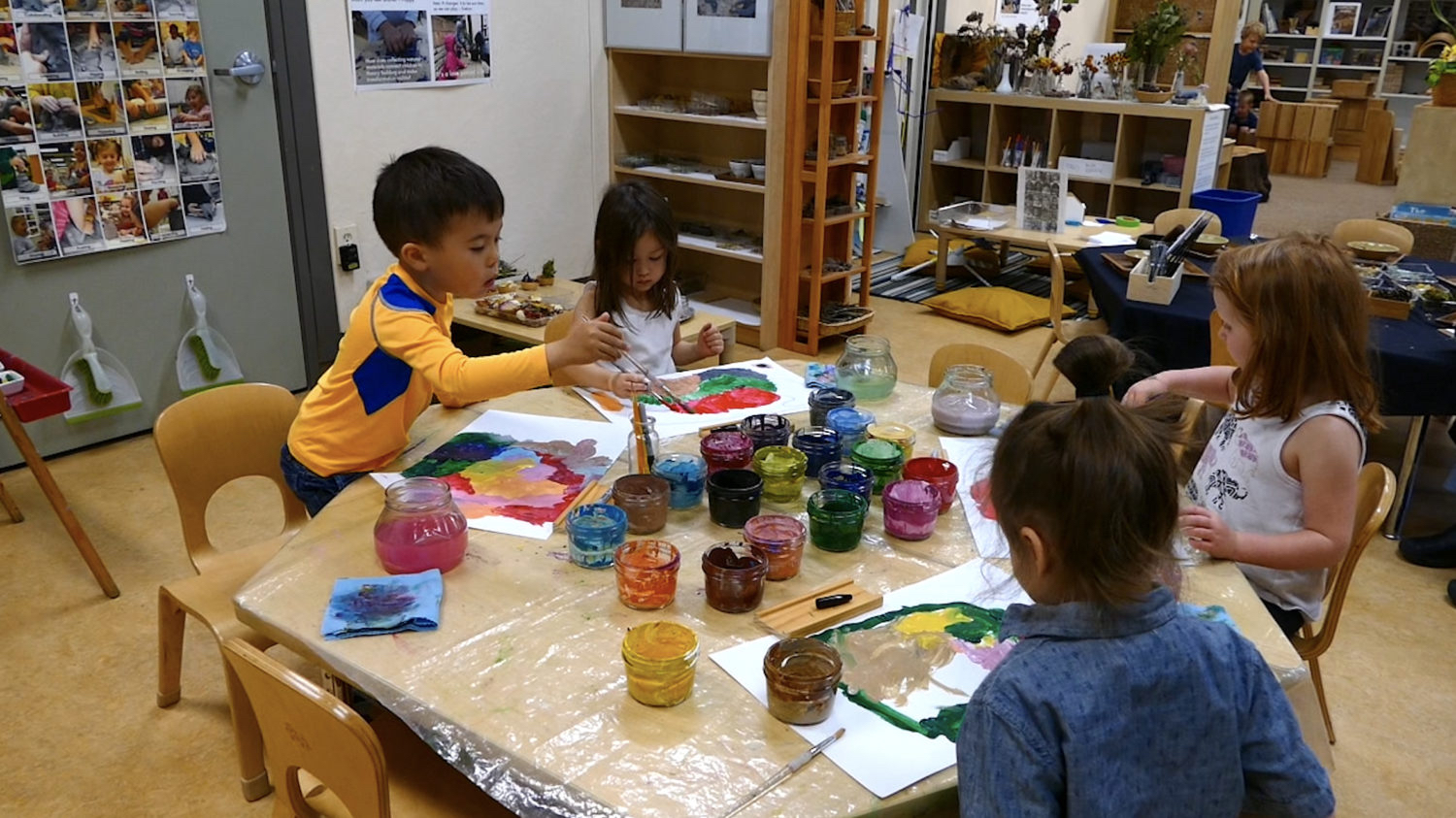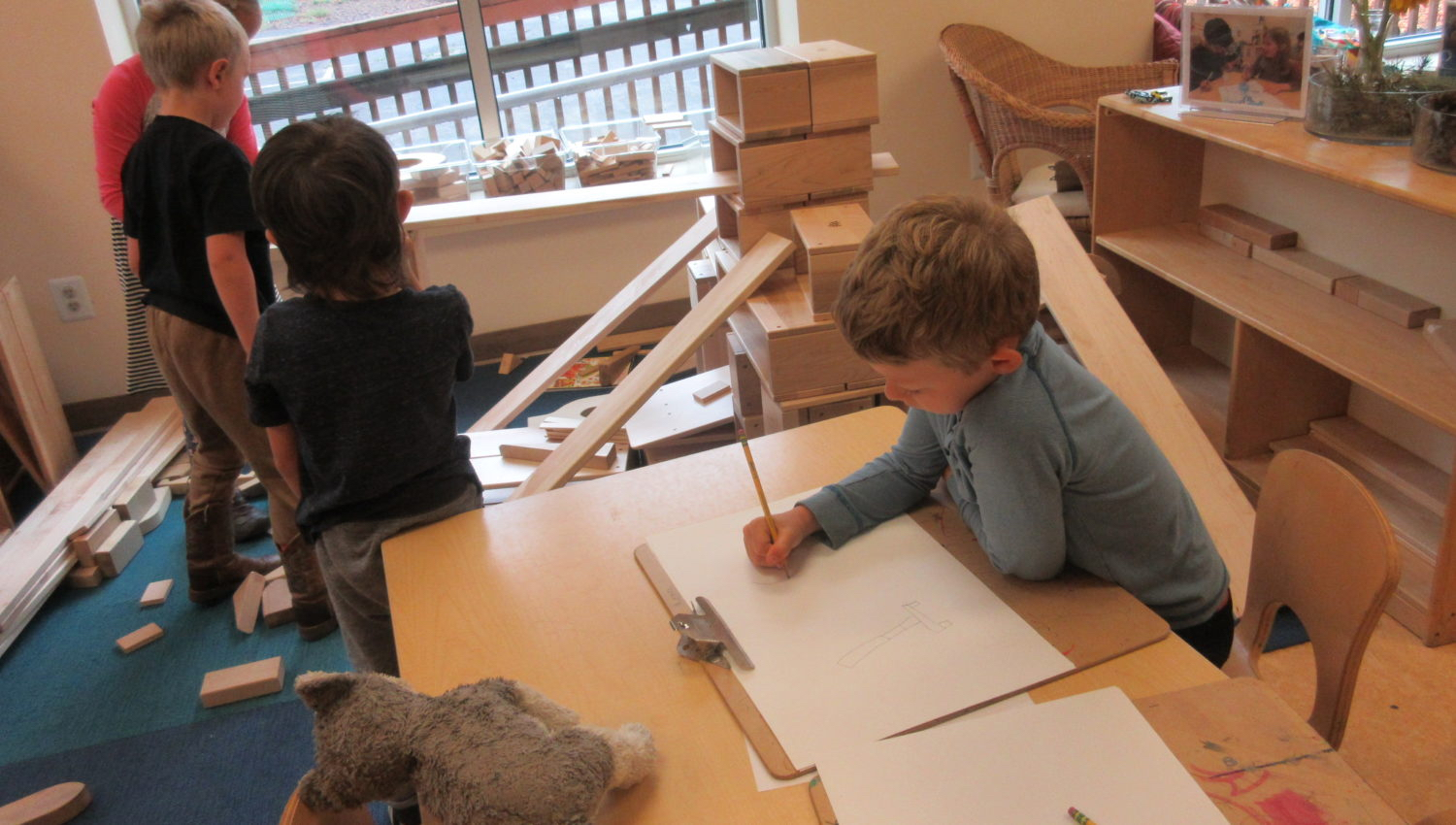My conversation with the Center for Playful Inquiry’s Susan Harris MacKay and Matt Karlsen ignited an intense curiosity about how early learning spaces might become zones for creativity, which sent me to the library (or three) to investigate Reggio Emilia. One text in particular, In the Spirit of the Studio: Learning from the Atelier of Reggio Emilia (2015) powerfully conveyed to me the potential of the atelier (French for studio; this piece will use the words interchangeably).
In the book’s foreword, Steven Seidel of the Harvard Graduate School of Education describes studios as “spaces where minds can and must pursue their thoughts without censorship or shame, where there is time for looking, listening and freedom of expression, and where there is commitment to go deeper into … questions of creativity, imagination, expressivity and research.” He continues, “When I first visited Reggio and saw the schools for myself, I thought that this was the closest I’d ever been to an avant-garde movement in education.”

Another essay in this book, Barbara Burrington’s “Melting Geography: Reggio Emilia, Memories and Place,” describes the formation of an atelier at the University of Vermont’s Campus Children’s Center in 1999. An atelier, she writes, “is not only about the arts. Nor is it about something in addition to the work we do in the classroom. Rather, it is about linking the experience of teachers’ lives with the children’s lives and waking up together in the world of a new geography.”
👉 A Story to Tell: The Campus Children’s Center at UVM
I caught up with Burrington to find out more about her studio experience. She cautioned me that while the atelier arose in Reggio, Italy, those who draw inspiration from the concept must not be afraid to incorporate their own cultures. Otherwise, she said, it’s trying to plant an olive tree in Vermont. “You’re probably not going to get a good crop.”
Researching the concept of the studio, I consulted other sources and spoke to additional practitioners besides Burrington. Based on what I gathered, here are the five key ingredients for a dynamic early learning atelier.
A space. Burrington recommends “a dedicated space for longer-term, cross-age explorations” but adds that it doesn’t take a big budget. In Vermont, they repurposed their staff room, and the greatest expense was shelving. The right space will also support documentation, a key concept in Reggio.
Ben Mardell, who recently left a decades-long career with Harvard’s Project Zero, where he helped develop the Making Learning Visible resources, now runs the atelier at Newtowne School in Boston. He calls the atelier “a center for kids to learn about specific topics, but also a place for adults to learn about kids’ thinking.” He credits Reggio’s leaders for referring to infants as “scientists with hypotheses.”
👉 The Studio Approach to Early Childhood Education (Technology Rich Inquiry Based Research)
Materials. Brenda Fyfe, dean and professor emeritus, School of Education, Webster University; read our interview) says the studios of Reggio Emilia schools have “all these wonderful, rich materials for children to explore, which could be paper and paint and brushes and pencils of all kinds and soft materials and rocks or assorted things that they can use in their constructions.”
The Reggio Alliance refers to “materials and media as languages for expression and learning.” (Indeed, the approach’s use of the word language harks back to the “bible” of Reggio, The Hundred Languages of Children). While working for the LEGO Foundation, designer, educator and play researcher Amos Blanton collaborated with the Reggio Children Foundation on the design of Scintillae, an atelier for exploring play, technology and learning. His latest project, Playing with the Sun, engages children and families in creative learning with sustainable energy.

An “artist.” Also known as an atelierista, this educator is often trained in the visual arts, with the goal of facilitating what the Reggio Alliance calls “a new kind of dialogue.” In the chapter of The Hundred Languages of Children that deals with the atelier, Vea Vecchi (one of Reggio’s original atelieristas) speaks of “the visual language as a means of inquiry and investigation of the world, to build bridges and relationships between different experiences and languages.” She describes the atelierista’s job this way: “creating situations within which creative processes can be experimented with, grow and evolve.”
Burrington notes, however, that the atelelierista doesn’t have to be a professional artist. “You do need people who have the knowledge of those materials,” she says. “That might mean taking some of your part-time teachers and creating a full-time system for staffing that space. Or you might invest in professional development so that all of your teachers have knowledge of how to use different media.” Her atelier in Vermont benefited from a teacher who was good at sewing. “She started using fabric as a medium with children,” she recalls. “The children drew monsters. Those monsters became patterns. Those patterns became pillows that were hand sewn in the studio.”
👉 Playing with Loose Parts in the Atelier (Reggio-Inspired Network of Minnesota)
Creativity. Vecchi writes, “Above all, the atelier brings the strength and joy of the unexpected and the uncommon to the process of learning. It supports a conceptual change that comes from looking through a poetic lens at everyday reality.” Burrington describes a long-term project dealing with the subject of memory, which sparked in-depth conversations influenced by the work of photographer Wendy Ewald.
In Spirit of the Studio, Pauline Baker writes, “Through interactions in the studio, a growing relationship develops between the child and materials, and this encourages children to invent, think, to problem-solve, to strategize, to create and to wonder about themselves and the world around them.”
👉 What is “Reggio-Inspired”? A Detailed Guide for Early Childhood Educators (Research and Play)

Community. Partly because they had a limited budget, Burrington and her colleagues engaged parents and the community to collect materials and build the space. This process not only saved money. It also engaged adults in the creation of the studio and helped them feel invested in its success.
In addition, she invited artists from the community to take part in activities. A local stained-glass artist, for example, guided five-year-olds as they put on special gloves and used tweezers and glue. In the aftermath of September 11, 2001, Burrington, her colleagues and the children in their school began a community mural project that, she says, “gave the studio a soul.”
Just as a collage comprises humble, disparate materials that add up to something new, the studio can give rise to unexpected connections and discoveries. In Spirit of the Studio, Charles Schwall writes, “When the atelier, as well as all our school environments, are continually developed and used in purposeful ways, they transform our everyday life in school into a living manifestation of the richness of children’s potential.”

Mark Swartz
Mark Swartz writes about efforts to improve early care and education as well as developments in the U.S. care economy. He lives in Maryland.


